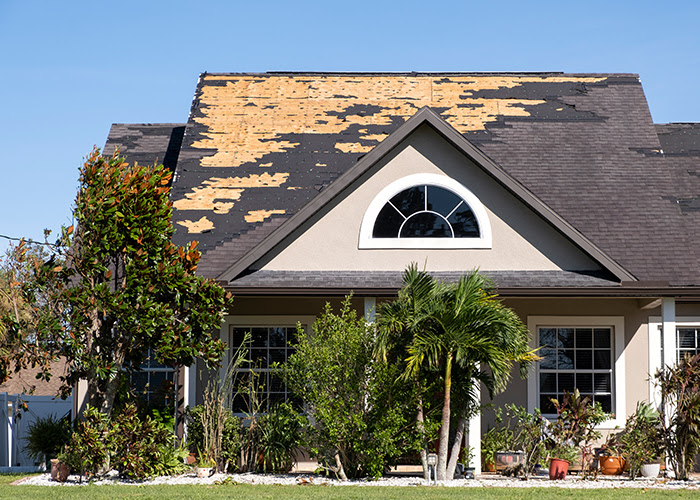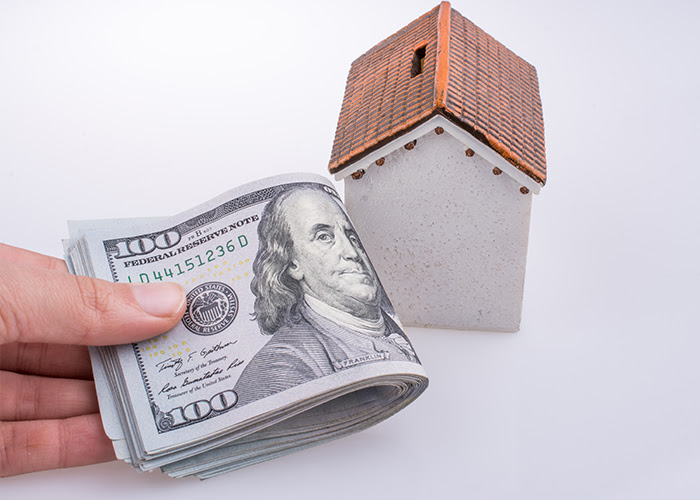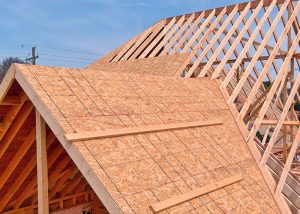Choose Deductible Buy-Downs for Houston Roof Savings
By Shantell Moya · 6 months ago · 12 min read

Roof damage in Houston usually just drains your wallet right when it happens. After the heavy storms, the Texas Department of Insurance notes that the percentage-based deductibles push thousands of dollars back onto you almost overnight. One bout of hail might bring an $8,000 estimate that you need to pay for yourself. Past events like Hurricane Harvey nudged many insurance providers to adjust their policies, and those new rules now pass even more of the repair tab to homeowners.
Because of that setup, the repair costs can climb very fast. A high deductible has you looking at a big invoice the second that wind or debris tears up your shingles. Most people don’t sleep well while they think about how to manage their everyday bills with an unexpected roofing bill, so it makes sense to look for a way to steady the budget before the next storm rolls through.
That’s where a deductible buy-down policy helps out. You pay a fairly small premium up front, and the policy then fills the gap between what your main homeowner plan covers and what you would normally have to pull from your savings. It works with your existing coverage instead of replacing it, and it tends to give you a better idea of your real out-of-pocket costs.
Let me explain how these buy-downs work and point out the situations where they can put real money back in your pocket here in Houston.
What Is a Deductible Buy Down?
Houston storms can really pound your roof. But your wallet doesn’t need to take the same beating. A deductible buy-down helps out and picks up part of the cost, so when wind or hail tears shingles away, you still have most of your cash. Think of it as a quiet cushion that waits in the background until the next squall arrives.
This extra coverage lowers the amount you need to pay whenever the standard deductible climbs past about 2 percent of the insured value. Instead of dealing with one very large repair bill, you pay a smaller preset figure that feels far easier to manage.
You have probably seen that many insurers now favor percentage-based deductibles for wind and hail claims. For plenty of Houston homeowners, that number sits somewhere between 2 and 5 percent. On a $300,000 house, that can leave you staring at roughly $15,000 before any work begins, and that expense is tough to absorb.
Buy-downs showed up across Texas after a run of hurricanes left neighborhoods trying hard to rebuild. Homeowners asked for relief, and carriers answered with this extra layer. You pay just a modest bump in premium, and in return, the deductible shrinks when the next storm rolls through.
You can attach the option to your main policy or pick it up as a separate rider. Take some time to read the fine print because each company sets its own rules about which events qualify and how the math works. If anything feels fuzzy, reach out to your agent and keep asking questions until everything makes sense.
Most buy-downs work with windstorms, hail, and hurricanes, so they line up neatly with the threats that hit Houston again and again.
The extra payment each year usually lands well below what you would hand over after one big storm, so over time, the balance tilts in your favor.
Your lender likely caps the deductible you’re allowed to carry. A buy-down helps you stay inside that limit without draining the emergency fund you have for everything else. Avoid a stressful cash crunch later by smoothing things out now.
How Does a Buy Down Work?
Storms actually slam Houston frequently, and the sky-high deductibles usually show up right behind them. A deductible buy-down policy helps to shrink that bill, so you end up keeping far more of your own cash once the clouds pass. You simply set things up by adding a small supplemental policy to the main homeowner plan you already carry. That extra coverage pays part of the deductible your primary insurer normally makes you pay on your own.
Say you have a $10,000 wind and hail deductible on your policy right now. Paying that full amount after a tree rips through your roof is certainly rough. With a buy-down in place, you might only write a check for $1,000 and let the supplemental policy take care of the rest.
The workflow unfolds in a few straightforward moves. First, you report the damage to your primary insurer, then let the adjuster walk the property and sign off on the claim amount. Next, you pay your contractor the full deductible so repairs can start. Always keep all receipts and photos together as you go.
Here’s the part that brings relief. Once the roofers finish up, you send the proof of that deductible payment to the buy-down carrier. Then they confirm the numbers, and a reimbursement check usually lands in your mailbox within two to four weeks. That reimbursement check will feel like a relief after you’ve already written a big payment to the contractor. Plenty of Houston homeowners leaned on the safety net after Hurricane Harvey when some deductibles topped $15,000. People who had the extra coverage paid only a slice of that figure and moved on faster.
Besides easing big repair bills, a buy-down policy helps you understand exactly what any future storm might cost. Less uncertainty means less sleepless worry the next time the forecast looks ugly. You should definitely keep an eye on the fine print, though. Most plans cover wind and hail damage. However, problems like a burst pipe may fall outside the scope. It’s important to take a minute to read each exclusion so nothing catches you off guard.
The coverage limits bounce around from company to company, and this difference can create gaps you don’t want. You should compare the numbers, ask follow-up questions, and settle on a level that feels comfortable for your household. Managing paperwork for two insurers can seem somewhat daunting at first. You should stay organized, make electronic copies, and snap plenty of photos. Doing that extra bit of prep now tends to speed up every step later. More homeowners are signing up for buy-downs as standard deductibles rise, sometimes hitting $25,000 or more on higher-value properties. You don’t have to shoulder that entire burden alone when a basic add-on can lighten it considerably.
When Should You Buy Down Your Deductible
Run the numbers first, and you’ll immediately get a feel for your real costs. You take the extra premium you’d pay each year and set it beside the chunk of cash you might owe if a big storm puts a hole in your roof. When you see those two figures next to each other, it usually brings the picture into focus and takes some of the worry off your shoulders, especially when the weather gets rough.
A quick example can really drive it home. Let’s say a buy-down adds about 150 dollars to your annual bill and could wipe out a 6,000-dollar deductible after a nasty hailstorm. In that case, you would have to keep that add-on for forty years before the premiums catch up with the one-time savings. Most Houston homeowners look at that math and simply breathe a little easier. Why pay thousands all at once when a modest yearly fee covers it?
Act early and you usually pay even less. When you buy the extra coverage before storm season rolls in, you usually lock in a lower rate because insurers know that claims spike once the spring and summer fronts start clashing over the Gulf. Grab the policy while the skies are still calm, and you give yourself a small discount and some confidence.
Let your personal cushion steer the choice. If you have a strong emergency fund, you might be fine taking on the bigger deductible and pocketing the premium difference. You’re able to manage a surprise bill without turning your world upside down. On the other hand, people on fixed incomes, especially retirees, usually like the predictability of a smaller, steady payment. A sudden 10,000-dollar hit after a hurricane could blow up a tight budget. But an extra few dollars each month barely registers.
Pay close attention when your standard deductible climbs above one percent of your home’s value. Most Houston policies now start at two or even three percent because of our growing storm exposure, so this jump can leave you staring at a very large out-of-pocket number. A buy-down can pull that figure back to a level you can actually live with.
You also get to adjust the coverage. Maybe you only worry about wind and hail while feeling comfortable keeping the standard deductible for common mishaps. Fine-tuning the policy in that way lets you match the real dangers in your area with the dollars you’re willing to spend. Try to run a few different scenarios, see where the premiums actually land, and pick the option that lets you sleep just a bit better when the clouds roll in.
Other Ways to Cover Deductibles
Skip the buy-down option, and you still have plenty of ways to handle those large roof deductibles. One popular option in Houston is a simple emergency fund for home repairs. You can set aside a little money each month until the full deductible is ready and waiting for you. This method keeps all decisions squarely in your hands, and you never pay any extra fees for the privilege. Over time, you’ll watch that balance climb and feel a bit more relaxed each time the forecast calls for heavy rain.
Another path shows up when you tap a home-equity line of credit after a storm rolls through. The bank lets you borrow against the value you already own in the house, so you can fix the roof immediately. Interest rates here usually beat what credit cards charge, and you can control the repayment schedule. Just make sure to always keep in mind you’re putting the house itself on the line, so weigh that risk carefully before signing any papers.
Maybe your budget can change instead. Try to modify your monthly contributions to the savings plan or look at a policy that carries a lower deductible in the first place. You’ll pay a higher premium each month. But you’ll need far less cash all at once when you file a claim. Do the math, run a few what-if scenarios, and see how the numbers line up with your own comfort level.
When you need repairs, roof companies understand that surprises happen and many now offer payment plans. Ask about payment plans when you get your estimates. The contractor spreads costs over multiple months, giving you predictable installments that feel gentler on the wallet. Well-defined terms help prevent sudden fees or late-payment problems, and you can still definitely keep some savings free for other emergencies.
Each choice carries trade-offs. An emergency fund grants the most freedom, though it takes patience and discipline to build. Credit lines solve problems immediately. But interest can grow if you stretch payments too far. Lower-deductible policies seem expensive at first.
Because Gulf Coast weather loves surprises, many Houston financial advisors recommend lining up more than one option. A single thunderstorm can flood inboxes with roofing claims, and you’ll want to act fast instead of scrambling for cash at the last minute. A combination of savings, credit, and insurance adjustments gives you room to move when every hour counts.
Nonprofit assistance programs wait in the wings as well. Local groups step in when insurance and personal funds still don’t cover the gap. That’s especially true for elderly homeowners or families on tight incomes. Just keep their phone numbers handy and never be afraid to ask if you qualify. A quick call could shave thousands off the final bill and speed up the entire recovery process.
A Secure Home Starts with a Solid Roof
When you take a proactive stance with your roof insurance, it puts you in charge of the surprise costs when the Houston storms roll through. Because you have already planned for that unpredictable weather, you can relax even a bit more while the wind howls outside. Many homeowners find that a small extra premium for a deductible buy-down seems like a fair trade for that sense of security.
Proactive planning usually trims down the big repair bills to something your budget can actually manage. When you choose a buy-down option now, you lock in the lower out-of-pocket numbers later, which steadies your monthly cash flow. Try to run the math for yourself and see how fast that safety net can simply pay for itself.
The Texas weather can turn rough in minutes, and the roof damage frequently shows up right when you’re juggling a dozen other tasks. But plenty of people don’t think about this coverage until a big storm leaves them holding a large bill. Why wait until the hail starts falling?
The reliable help matters just as much as a solid policy, so team up with the experts who know local roofs inside and out.
At Roof Republic, we work on commercial and residential projects across Greater Houston, and we stay ready to check, repair, or replace whatever the latest squall throws at you. Give us a call or book a free inspection online, and let’s protect your home together!









Comments
Sort by: